Today we’re taking a look at handfasting, as part of our series on symbolic acts chosen by couples as part of their humanist wedding ceremonies. Rituals and traditions can add depth and emotion to your wedding day, and handfasting is an excellent choice to do just that. It is about telling your love story as a couple, in a way that is personal to you and creating moments to express your love in different ways.
What is handfasting?
Handfasting is a symbolic act that takes place during a wedding ceremony, where the hands of the happy couple are bound together with ribbon or cord, to represent their commitment to each other. Their hands are wrapped together in an expression of their love, with words, poetry or music accompanying the ritual.
It is a wedding ritual that is said to date back over 2,000 years and has Celtic roots. Handfasting is also known as a hand tying or hand binding ceremony and is becoming popular again in modern weddings as a beautiful symbolic moment during the ceremony. It is a popular choice for many humanist weddings due to its long history and visual appeal.

What is the history of handfasting?
The dictionary definition of handfasting is ‘to engage (someone) to be married’ and the word derives from the Old Norse term ‘handfesta’ which meant ‘strike a bargain by joining hands’.
Handfasting is said to originate in pre-Christian times, but this isn’t very well-documented. It was popular in the Middle Ages when it represented the engagement of a couple, or a sort of common-law marriage by consent. It then came back into fashion in the late 18th century. In his 1820 novel ‘The Monastery’ Sir Walter Scott popularised the misconception that handfasting was the start of a trial marriage lasting a year and one day.
Perhaps unsurprisingly, given its long history, there are many variations to the binding together of hands as a symbolic act of unity.
How to do a handfasting ceremony
During the humanist wedding ceremony, often before the vows and exchanging of rings, the celebrant will introduce the hand tying ritual.
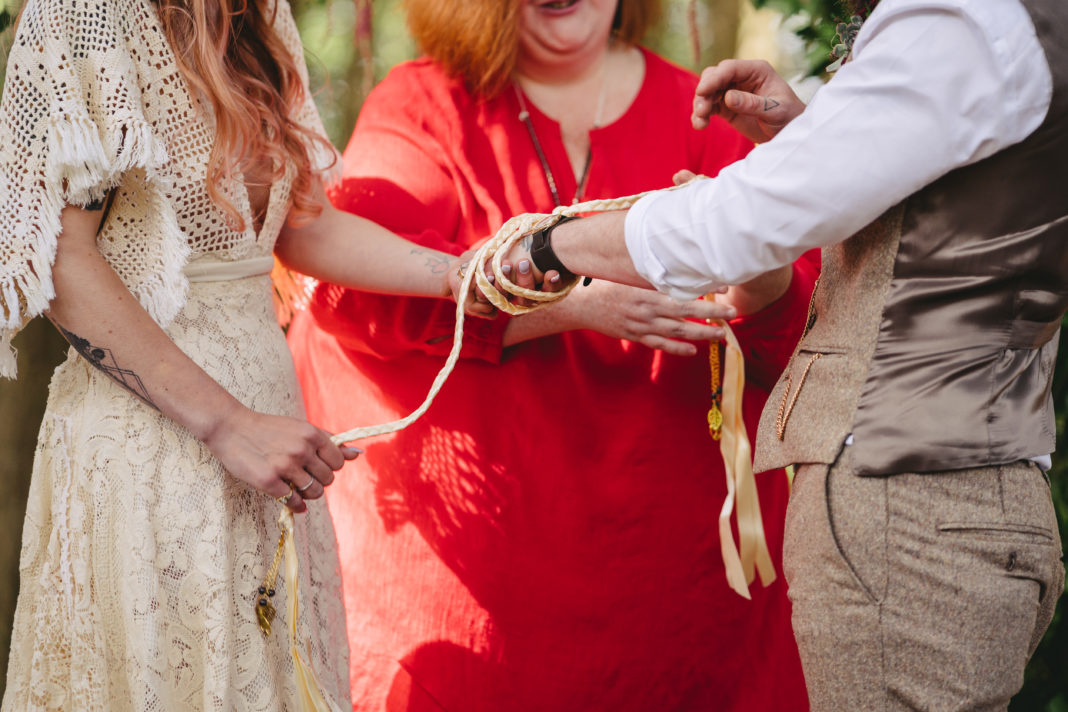
Using ribbons, lace, or cord, or material that has significance to the couple, the hands of the couple are bound together. These ties are the physical representation of their commitment to each other.
There are different ways this can be done in a handfasting ceremony. You can link one hand each, or tie both hands using a figure eight to symbolise eternity. The material is looped around the hands of the couple in a particular order, whilst or before they make their vows.
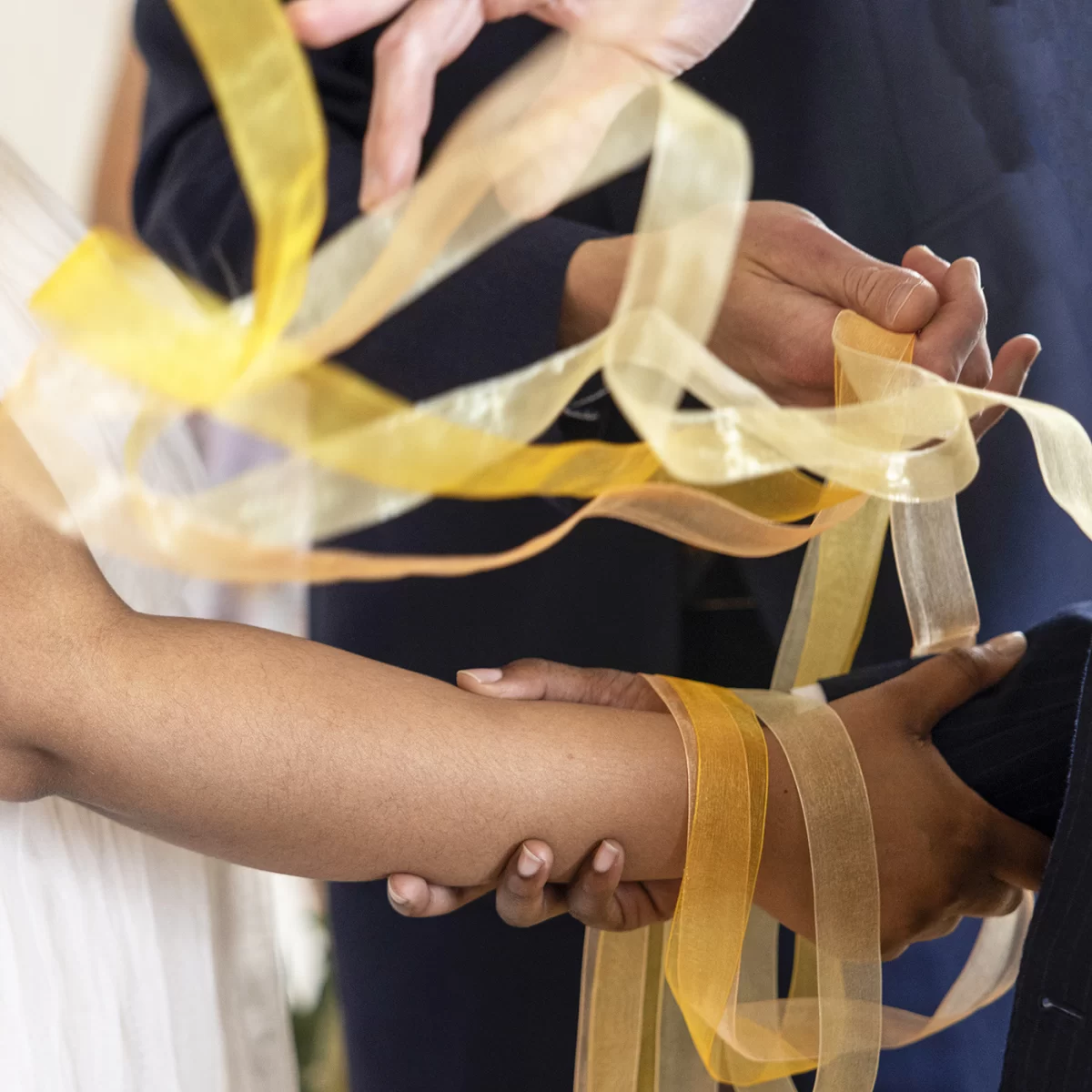
The handfasting can be performed by your celebrant, but can also involve members of your family or wedding party. Many couples choose to use different colours to represent each person involved in the ritual, creating a sense of unity and togetherness through this symbolic act.
Sometimes the parents of the couple bring the ribbons for the hand binding. If the couple have children, it could be that they are involved in the ceremony in this moment. A handfasting ceremony can offer a lovely way to make special people in your life feel part of your big day.
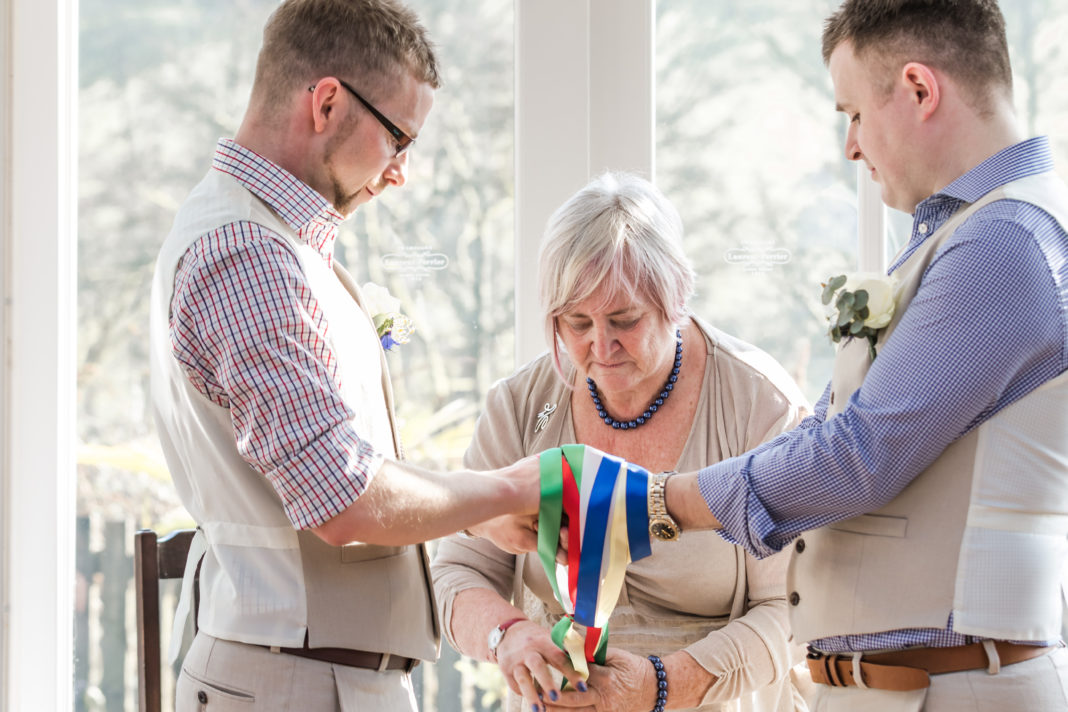
At the end of a hand tying ceremony, the celebrant explains that whilst the physical ties will be removed, the strength of the internal ties forged that day will remain.
To finish some forms of the handfasting ceremony the couple pull back their hands and the ribbons form an infinity knot. This is where the phrase ‘tying the knot’ originated! This can then be a charming keepsake from the day, perhaps to be displayed in a frame or hung in your home. Some people choose to display it near their cake later in the wedding day.
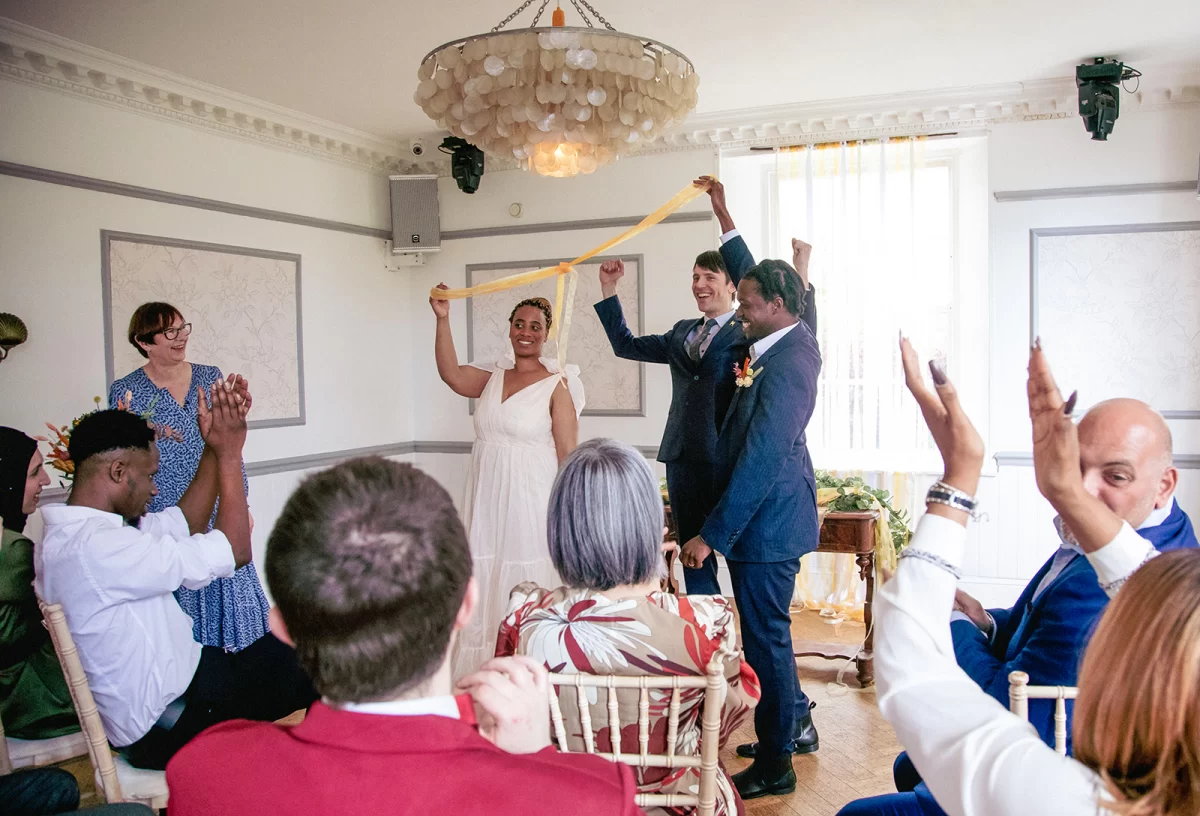
Handfasting – ribbons or cords?
Ribbons can be found in many colours and offer a delicate touch, whereas cord can symbolise the strength of your connections. As with every element of a humanist wedding, the choice is yours to make, so that the wedding can truly reflect you and your love story.
Some couples choose to have cords woven from three strands to show strength and unity. The colours can be chosen to go with your theme, or to represent different qualities you wish to bring into your marriage, such as red for passion or green for growth.
Other couples use something with personal significance, like a tartan, African wax fabric, vintage lace or even sailing ropes! Whatever you choose for your handfasting, make it something that suits you as a couple and you won’t go wrong.
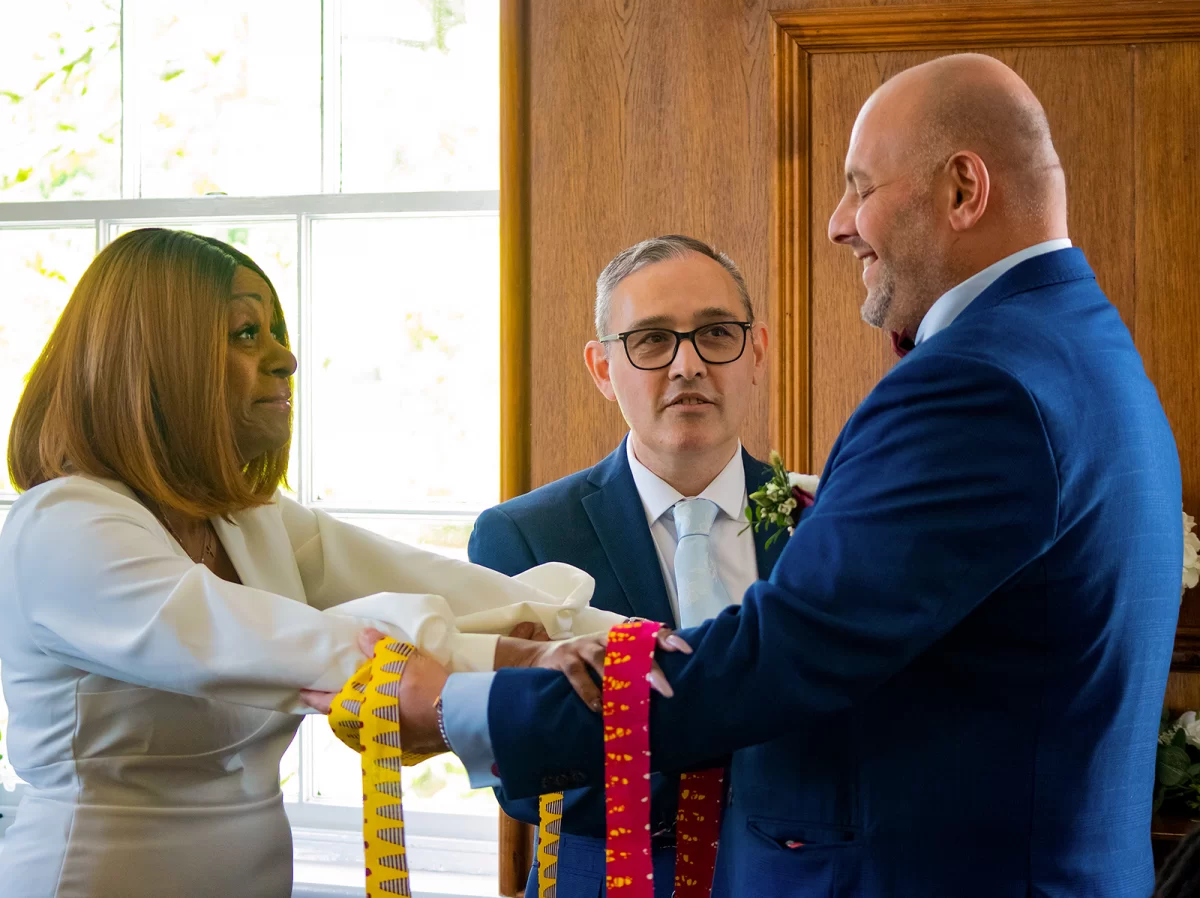
Personal to you
Your handfasting ceremony will be personal to you, created with your celebrant during the wedding ceremony planning process.
Your Humanist Ceremonies celebrant will be able to make suggestions and share ideas for hand binding ceremonies, but the script will be bespoke to you as part of your story.
Other symbolic gestures
Humanist wedding ceremonies may include multiple rituals: unity candle-lighting, ‘tying the knot’, the cut-out heart race, and many more. Whatever you choose, your humanist celebrant will help you plan and rehearse them prior to the big day. They can also help develop or invent symbolic acts that help you tell your story as a couple.





